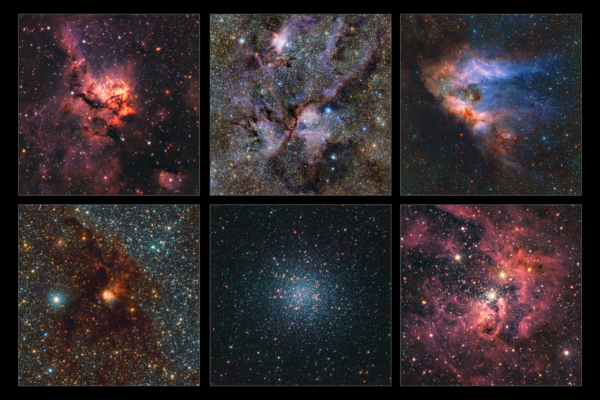Astronomers have captured over 1.5 billion celestial objects within the Milky Way galaxy over the past decade using an infrared camera on a telescope and have created the most detailed map of the galaxy to date. According to astronomers, these discoveries have forever changed their perception of the Milky Way.
The European Southern Observatory (ESO) stated in a press release on September 26 that astronomers used the Visible and Infrared Survey Telescope for Astronomy (VISTA) located in Chile to observe the central region of the galaxy for over 13 years.
The observational data amounted to a staggering 500 terabytes (TB), making it the largest observation project involving the telescope at the observatory to date.
Dante Minniti, an astrophysicist at Universidad Andrés Bello in Chile, who led the research project, expressed, “We have made so many discoveries that we have forever changed our view of the Milky Way.”
The research team utilized VISTA’s infrared camera, VIRCAM, to capture 200,000 images, compiling them to create the most detailed map of the Milky Way to date. VIRCAM has the capability to penetrate the dust and gas pervading the galaxy, allowing observations of radiation from the most concealed areas of the galaxy, as if opening a unique window in the Milky Way.
The vast database covers an area of sky equivalent to 8,600 full moons, including newborn stars and globular star clusters. Infrared observations by VISTA enable the detection of ultra-cool objects emitting light at these wavelengths, such as brown dwarfs (failed stars unable to sustain fusion) or rogue planets that do not orbit stars.
The observations began in 2010 and concluded in the first half of 2023, spanning a total of 420 nights. By observing each section of the sky multiple times, the research team not only determined the positions of these celestial objects but also tracked their movements and any changes in brightness.
For stars exhibiting periodic variations in brightness, the research team plotted their charts. These stars can serve as cosmic yardsticks to measure distances between different celestial bodies.
The team also tracked down hypervelocity stars—stars moving at high speeds ejected after close encounters with supermassive black holes lurking in the central region of the galaxy.
An ESO-provided mosaic image (as shown in the top image) highlights a small part of the Milky Way galaxy containing six celestial objects. From left to right, top to bottom, they are: the nebula NGC 3576, the nebula NGC 6357, the nebula M17, the nebula NGC 6188, the cluster M22, and the nebula NGC 3603. Except for the M22 cluster containing very dense old stars, the other nebulae consist of gas and dust clouds where stars are currently being born.
The research findings were published on September 26 in the journal “Astronomy and Astrophysics.”

